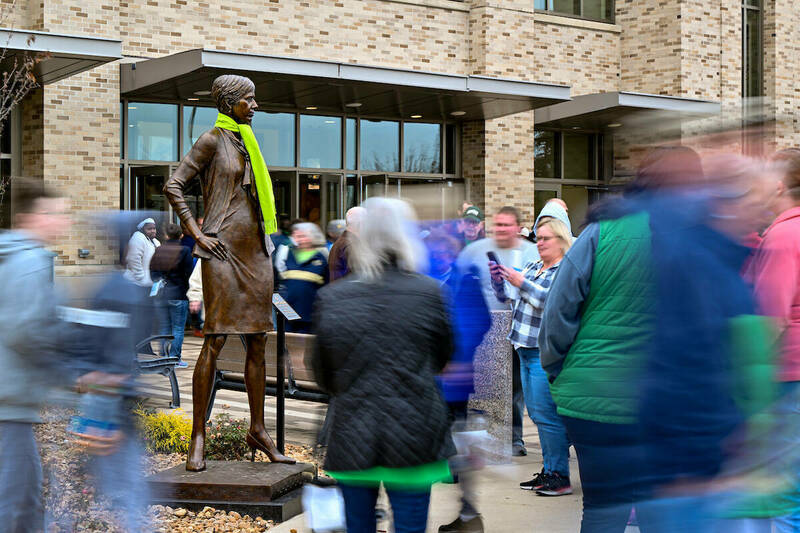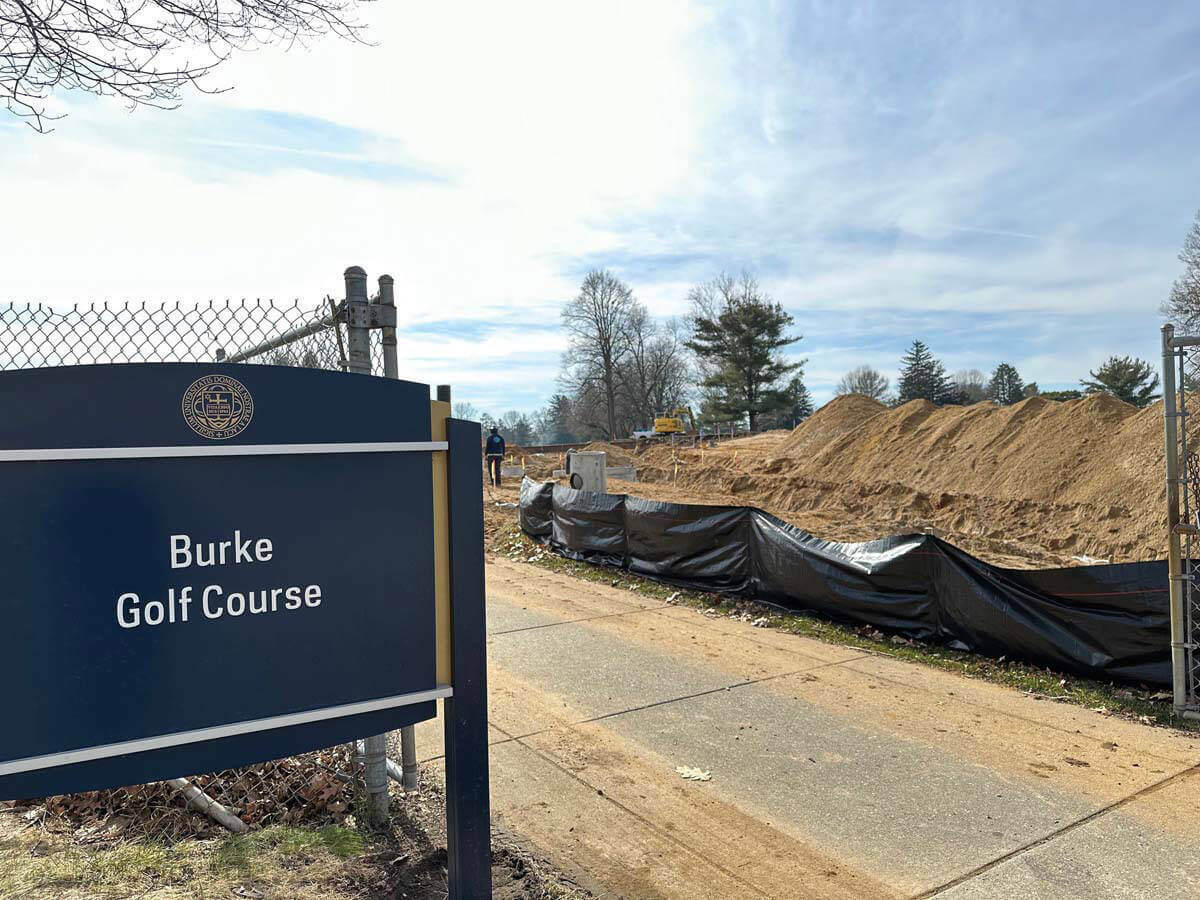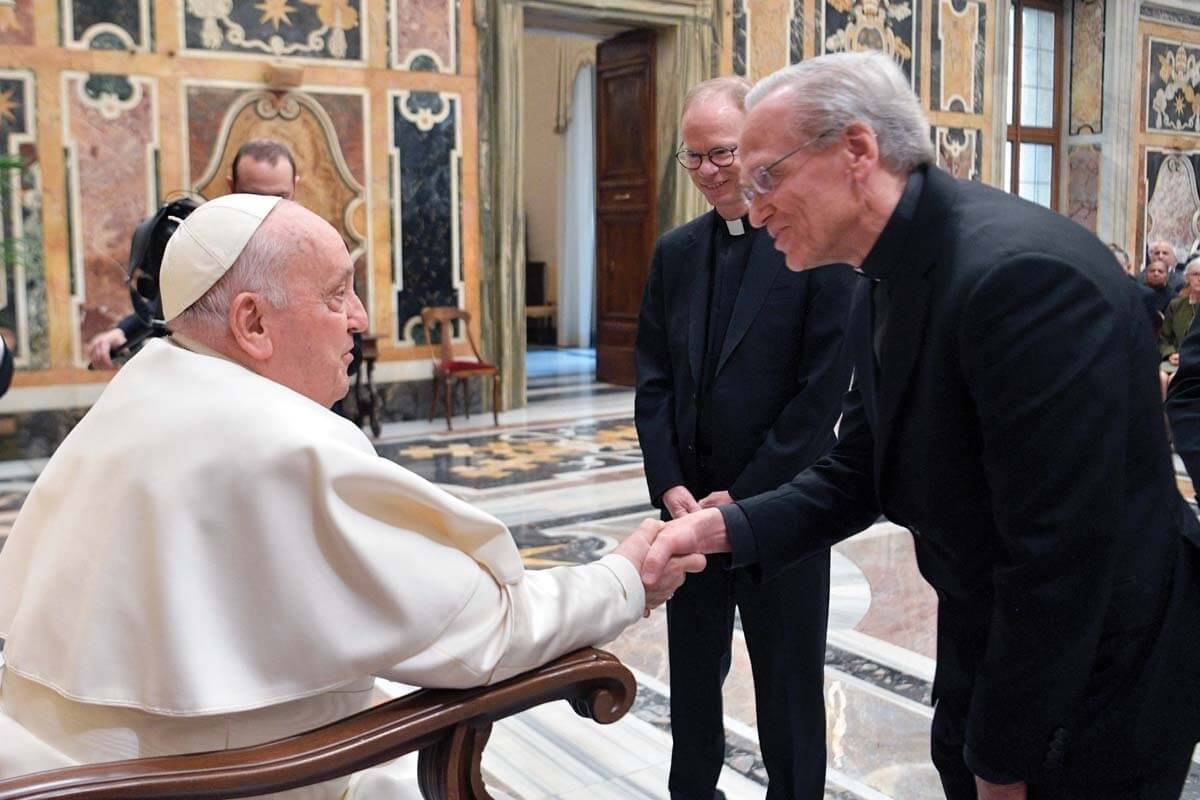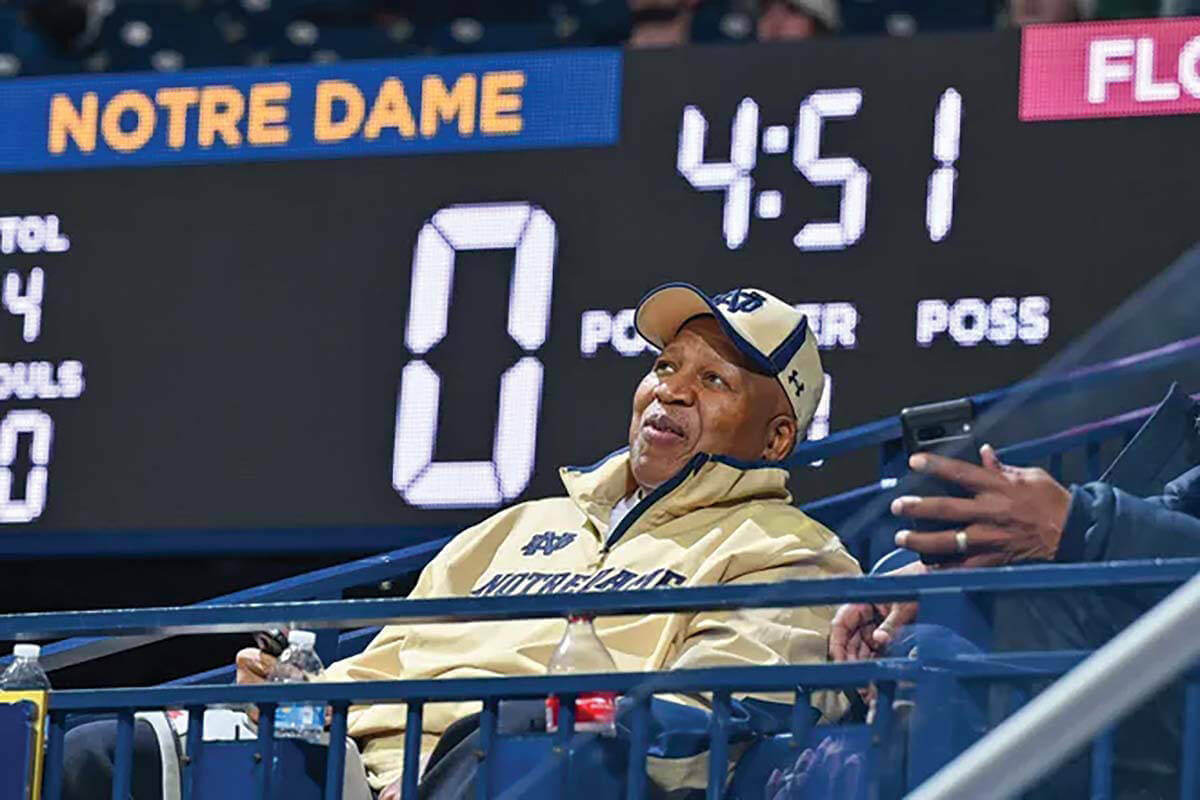 Matt Cashore ’94
Matt Cashore ’94
Muffet McGraw has become a permanent fixture on campus — in bronze. A life-size statue of the legendary women’s basketball coach was unveiled in front of Purcell Pavilion in December.
McGraw coached the Irish women’s team from 1987 to 2020, leading the team to nine Final Fours, seven championship-game appearances, and national championships in 2001 and 2018. She had 848 Notre Dame wins and was inducted into the Women’s Basketball Hall of Fame in 2011 and the Naismith Memorial Basketball Hall of Fame in 2017.
Hundreds of fans and many of McGraw’s former players gathered for the ceremony. McGraw is the first female Notre Dame coach to have a statue erected in her honor.
The coach thanked many for their constant support: the fans, the women who came before her, her assistant coaches and players, her sisters and her husband, Matt. “You cannot get to this point alone,” she said.
The sculpture was designed and sculpted by Massachusetts-based artist Ann Hirsch. Immediately after its unveiling, the Notre Dame women’s team under Head Coach Niele Ivey ’00, a leader of the 2001 title team and longtime member of McGraw’s staff, beat the Purdue Boilermakers 76-39.

Changes are visible at the University’s nine-hole golf course on the southwest corner of campus. The nearly-century-old Burke Golf Course is being reconfigured and nearby Holy Cross Drive realigned to make way for two new residence halls that will replace Pangborn and Fisher halls. The work, expected to be completed this summer, will also create additional student recreational space.
Huge mounds of dirt and earth-moving equipment appeared during the winter as the project progressed. The starter’s cottage was demolished — a new one will be built — and two holes will be shortened.
The Burke will remain a nine-hole course with four par-3 and five par-4 holes. When it opened in 1929, the course was a 6,500-yard, 18-hole, par-71 gift from Notre Dame trustee William J. Burke, founder and president of the Vulcan Last Corp., a shoemaking company based in Portsmouth, Ohio. Burke died in 1928 before the course was completed.
The current reconfiguration is at least the fourth in the course’s history. It was shortened in 1939 to make way for the Rockne Memorial gymnasium, then again in the 1950s to provide space for Pangborn and Fisher. It was reduced to nine holes in 1995 to allow for construction of residence halls on what is now West Quad.
Female golfers were first permitted to play the Burke in 1970. The University’s 18-hole Warren Golf Course opened in 1999.
Notre Dame will build a new psychology clinic in South Bend to expand the availability of affordable mental health counseling services for community residents.
The Wilma and Peter Veldman Family Psychology Clinic will be built on Hill Street south of campus. The project is being funded by a major gift from the Veldman family to honor their late parents. In addition to providing mental health counseling, the clinic will unite the work of Notre Dame’s William J. Shaw Center for Children and Families; the Suicide Prevention Initiative — Research, Intervention, and Training (SPIRIT); and a major new substance abuse program.
The new clinic will allow for expanded research by Notre Dame psychology faculty and provide a training site for graduate students in clinical psychology. Recent research by Daniel Tadmon, an assistant professor of sociology at Notre Dame, found that about 70 percent of Americans have better access to psychiatric care than do residents of the South Bend area.

Members of the University’s Board of Trustees, along with University President Rev. John I. Jenkins, CSC, ’76, ’78M.A., and President-elect Father Robert Dowd, CSC, ’87, had an audience with Pope Francis on February 1 during the trustees’ winter meeting in Rome.
In his remarks, the pontiff noted that the task of a Catholic university “is not only to expand the mind, the head; it must expand the heart.
“The entire University community is therefore called to accompany people, especially young people, with wisdom and respect, on the paths of life and to help them cultivate an openness to all that is true, good and beautiful,” the pope said. “In this regard, we cannot overlook the essential role of religion in educating people’s hearts.”
The University is taking a major step to better support graduate student families by extending its health insurance subsidy to cover the spouses and children of qualifying students. The news was announced in December by Michael Hildreth, the dean of the Graduate School and a professor of physics.
“This offering reflects the University’s values in the support of families, making it easier for our graduate students and their families to flourish during their time at Notre Dame,” Hildreth said. The expansion will take effect at the beginning of the 2024-25 academic year.
When the University’s Strategic Framework was unveiled last year, excellence in graduate education and research were identified as essential to realizing Notre Dame’s aspiration to become the world’s leading Catholic research university.

Former Irish basketball star Dwight Clay ’75 was in the Purcell Pavilion stands on January 13 to watch Notre Dame take on the Florida State Seminoles. Memories from 50 years earlier were flashing through his mind.
On January 19, 1974, Clay’s corner shot with 29 seconds left capped a wild comeback as the No. 2 Irish defeated top-ranked UCLA 71-70, snapping UCLA’s historic 88-game winning streak.
It was the only shot that Clay, a point guard who led the Irish in assists for three consecutive seasons, took in the second half. (The moment was captured in a photograph by Joe Raymond ’74, who went on to a long photojournalism career before his death in 2020.)
“My 15 minutes of fame lasted 50 years,” Clay, 70, told Trib Total Media in his hometown of Pittsburgh a few days after the game.